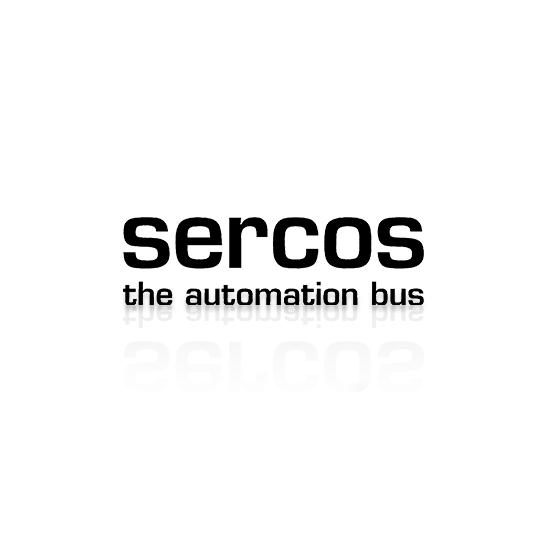Bus Terminals
Add page to favorites
Products

BKxxxx | Bus Coupler
Bus Couplers are the link between the modularly extendable Bus Terminals and the corresponding fieldbus systems.

BCxxxx, BXxxxx | Controller
The Bus Terminal Controllers BC and BX can be used as an autonomous control system or as intelligent fieldbus slaves.

KL1xxx | Digital input
The KL1xxx Bus Terminals enable the acquisition of binary signals from the process level.

KL2xxx | Digital output
The KL2xxx Bus Terminals generate binary signals and forward them to the process level.

KL2xxx | Compact drive technology
The KL2xxx Bus Terminals provide compact drive solutions for stepper and DC motors as well as for AC motor speed controllers.

KL3xxx | Analog input
The KL3xxx Bus Terminals process analog input signals for voltage, current, temperature and other measured variables.

KL4xxx | Analog output
The KL4xxx Bus Terminals output analog signals with the levels 0…10 V, ±10 V, 0…20 mA and 4…20 mA.

KL5xxx | Position measurement
The KL5xxx Bus Terminals are intended for the evaluation of complex signals from absolute and incremental encoders.

KL6xxx | Communication
With the KL6xxx Bus Terminals, Bus Terminal stations become a universal gateway between different systems.

KL85xx | Manual operating
The KL85xx manual operating modules enable switching, controlling and monitoring of signals without opening the control cabinet.

KL8xxx | Power
Together with a power contactor, the KL8001 power terminal forms a complete distributed motor starter.

KL9xxx | System
The KL9xxx Bus Terminals complete the I/O system with functions such as power supply, fusing and filtering.

KLx9xx | TwinSAFE
The safe I/Os and the TwinSAFE Logic Terminal can be integrated in any fieldbus system.

KLxxxx | Special Terminals
The KLxxxx Bus Terminal portfolio includes selected coupler and terminal types with a software or hardware modification.
A fundamental component for automation
The Beckhoff Bus Terminal system, consisting of electronic terminal blocks, is a fundamental component for automation technology. The open, fieldbus-neutral I/O system is connected to more than 30 fieldbus and Industrial Ethernet systems, such as PROFIBUS, PROFINET, CANopen or BACnet, using Bus Couplers or master terminals.
With a wide range of I/O components for connecting all commercially available sensors and actuators, Beckhoff covers the communication routes between the control system and the field level, thus completing its universal control and drive solution. The focus here is on the simple integration of the open control technology. The product portfolio includes more than 1,000 Bus Terminals for over 100 different signal types.
The Beckhoff Bus Terminals are used in various industrial sectors – from machine construction to building control systems – and have successfully proven themselves due to the simple system planning, wiring, commissioning and maintenance.
Advantages at a glance
The Beckhoff Bus Terminals form an open and fieldbus-neutral I/O system consisting of electronic terminal blocks. The connection between the Bus Terminals and the fieldbus is provided by Bus Couplers, which are available for PROFIBUS, CANopen, DeviceNet, and many other common fieldbus systems.
Besides standard I/O signals, the product portfolio also includes safety I/Os for the combined use of safety functions and I/O technology in one system. Furthermore, Bus Terminals are also available for special tasks in building automation or for implementing drive solutions.
All components can be simply plugged onto the DIN rail in the control cabinet or terminal box. Power supply, communication and field voltage distribution are automatically provided via internal terminal contacts when they click into place.

The fine granularity of the Bus Terminals enables bit-precise composition of the required I/O channels. The digital Bus Terminals for generating and processing binary signals are designed as 2, 4, 8 and 16-channel terminals or with up to 64 channels as terminal modules. The 16-channel HD (High Density) version combines 16 digital input and output channels into a standard terminal housing with a width of just 12 mm.
The analog input terminals for the acquisition of analog signals from the field can process a wide range of measured variables, such as current, voltage, temperature and resistance. In addition to the signal type, the terminals also differ in signal resolution and measuring accuracy. In the analog output range, the standard signals of ±10 V, 0…10 V, 0…20 mA and 4…20 mA are consistently available as 1, 2, 4, or 8-channel version in a standard housing.
The Bus Terminal portfolio also offers comprehensive solutions for drive control, the evaluation of various encoder interfaces and for special measurement applications, such as power measurement.

The Bus Terminals form a fieldbus-neutral I/O system in wich the Bus Couplers act as an interface between fieldbus and the Bus Terminals. Bus Couplers are available for the following bus systems:
- EtherCAT, the high-speed, real-time Ethernet fieldbus
- Lightbus, the fast fiber-optic fieldbus
- PROFIBUS DP/FMS, according to the European standard EN 50170
- Interbus, which has been on the market since 1987
- CANopen, the multimaster in the actuator/sensor area
- DeviceNet, the device bus with CAN technology
- Modbus, the open fieldbus
- CC-Link, the fieldbus for the Asian market
- SERCOS interface, the drive technology bus
- RS232/RS485, the network for low-cost solutions
- Ethernet TCP/IP, the network bus
- Ethernet/IP, the Industrial Ethernet solution from ODVA
- PROFINET, the Industrial Ethernet solution from PNO
With the master terminals, fieldbus functionalities are available in form of a standard Bus Terminal. This is particularly advantageous for bus systems that are integrated as a subsystem in a higher-level system. This means that only one system is required for the subsystem and the higher-level bus interface. Master terminals are available for the following bus systems:
- AS-Interface, the sensor/actuator bus for the lower control level
- IO-Link, the interface for intelligent sensors and actuators
- KNX/EIB, LON, DALI, MP-Bus, M-Bus, SMI and Enocean: the communication standards in building automation

With various connection options, the Bus Terminal system allows optimal adaptation to the relevant application. In the KLxxxx Bus Terminals, electronics and connection level are located in one housing.
In contrast, the KSxxxx Bus Terminals have a pluggable wiring level, so that in case of service, the entire wiring can be removed as one connector from the top side of the housing.

With the Beckhoff Bus Terminals, control cabinets and terminal boxes can be built more economically. The Bus Terminals perfectly fit the terminal boxes’ dimensions and can be easily plugged onto a standard profile rail. The contacts are made as the terminal clicks into place, with no further action. Each terminal remains individually exchangeable. A clear front connection panel with a status display and the insertable contact labeling ensure clarity on-site. The flexible conductor connection technologies allow the usage of the Bus Terminals in almost every application without additional wiring work. The 3-wire technology, optionally supplemented by a protective conductor connection, enables the direct link of sensors and actuators to the terminal.
Connectivity for all common fieldbus systems
Beckhoff provides an extensive range of fieldbus components for all common I/O and fieldbus systems. The wide choice of I/O components means that the bus system best suited to the particular application can be chosen.
Suitable Beckhoff components depending on the fieldbus system

EtherCAT
EtherCAT (Ethernet for Control Automation Technology) is the Ethernet solution for industrial automation, characterized by outstanding performance and particularly simple handling.

Ethernet TCP/IP
The advantages of Ethernet, such as high data transmission rates, easy methods of integration into existing networks, and a wide range of services and interfaces are also found in the Beckhoff Ethernet products.

PROFIBUS
PROFIBUS is widely used as a fast bus for decentralized peripheral components (PROFIBUS DP). In addition to PROFIBUS DP Beckhoff also supports the standard for drive communication, PROFIBUS MC.

PROFINET
PROFINET is the open Industrial Ethernet standard of the PNO (PROFIBUS Nutzerorganisation).

EtherNet/IP
EtherNet/IP is the Industrial Ethernet standard of the ODVA (Open DeviceNet Vendor Association). It is based on Ethernet TCP/IP and UDP/IP.

CANopen
The effective utilization of the bus bandwidth allows CANopen to achieve a short system reaction time at comparatively low data rates.

DeviceNet
DeviceNet is a sensor/actuator bus system that originated in the USA, but meanwhile is increasingly being used in Europe and Asia. DeviceNet is CAN-based (Controller Area Network).

Interbus
Interbus is a sensor/actuator bus with low configuration expenditure. The summation frame protocol of this master/slave system offers high efficiency in cyclic communication.

SERCOS
SERCOS was originally developed as a fast fiber-optic bus system for drives. Thanks to the Beckhoff SERCOS Bus Coupler, the advantages such as high data rate and short cycle times can now be provided for the I/O peripherals, too.

CC-Link
CC-Link (Control & Communication Link) is an open bus system for communication between the control and fieldbus level. It is predominately used in Asia.

Modbus
Modbus RTU is an open, serial communications protocol based on the master/slave architecture. Due to its open standards, Modbus TCP is common for the use of Ethernet in the fields of automation.

RS232, RS485
The classic serial interfaces, RS232 and RS485, continue in wide use. The Beckhoff RS485/RS232 I/O modules use a simple, published serial communication protocol that is easy to implement.

IO-Link
IO-Link serves to connect sensors and actuators to the control level by means of an inexpensive point-to-point connection. As an open interface, IO-Link can be integrated in all common fieldbus systems.

EnOcean
EnOcean enables the battery-free transmission of switching signals and measured values and is mainly used in building automation.

BACnet
BACnet (Building Automation Control Network) is a standardized, manufacturer-independent communication protocol for building automation.

Further subsystems
The integration of subsystems is possible using communication terminals.
Центральный офис в России
ООО «Бекхофф Автоматизация»
Серебряническая наб., д. 29
БЦ «Silver City», 1-й этаж
109028 г. Москва